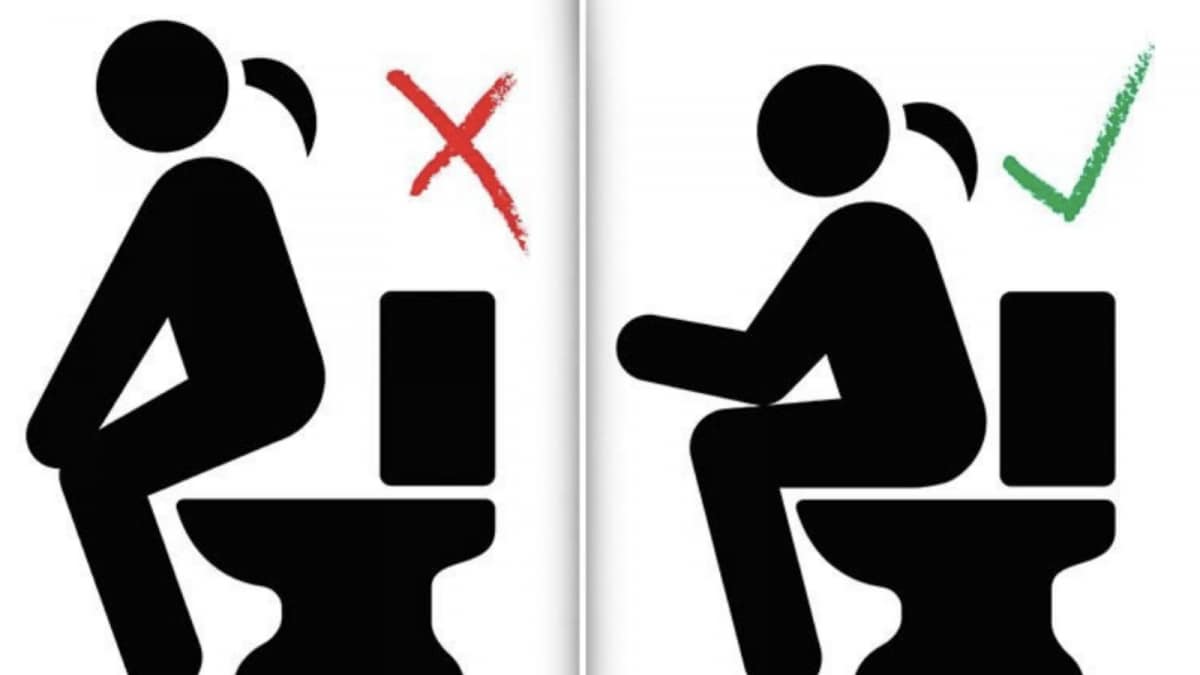Think Hovering Over Public Toilets Keeps You Safe? Doctors Say It Can Trigger UTIs, Bladder Issues

Last Updated:July 31, 2025, 13:01 IST
Hovering might seem like a hygienic way to avoid germs on the seat, but it can lead to several urinary and pelvic health issues
When you hover, you often can’t relax your pelvic floor muscles fully or position yourself comfortably
It’s a common misconception that hovering over public toilets is a safer alternative to sitting down. But according to experts, this habit can actually do more harm than good. Dr Sarika Pandya, Consultant Female Urologist, Asian Institute of Nephrology and Urology, Hyderabad, explains why:
Why Hovering Over Toilets Can Be Risky
Hovering might seem like a hygienic way to avoid germs on the seat, but it can lead to several urinary and pelvic health issues. Here’s how:
1. Increased Risk of UTIs
When you hover, you often can’t relax your pelvic floor muscles fully or position yourself comfortably. This can result in incomplete bladder emptying, meaning some urine stays in your bladder. Residual urine creates a breeding ground for bacteria, increasing the risk of urinary tract infections (UTIs). UTIs are among the most common conditions urologists treat, and women are especially susceptible due to their shorter urethra.
2. Bladder and Pelvic Floor Problems
Hovering puts extra strain on your pelvic floor muscles and bladder. Over time, this can contribute to:
Overactive Bladder – Frequent, sudden urges to urinate
Urinary Incontinence – Leaks due to weakened pelvic muscles, especially when laughing, coughing, or sneezing
Pelvic Pain or Dysfunction – Awkward posture can cause muscle tension or long-term pelvic issues, often requiring pelvic floor therapy
3. Other Unexpected Complications
Muscle Strain and Posture Issues – Hovering engages your core and leg muscles unnaturally, potentially leading to back pain, knee strain, or even falls (especially in older adults)
Incomplete Voiding and Reflux – Straining while hovering can, in rare cases, cause vesicoureteral reflux (urine flowing backward toward the kidneys), worsening kidney problems if you’re already vulnerable
Hygiene Paradox – Ironically, hovering may not reduce germ exposure much. Urine splatter can land on surfaces or clothing, increasing contamination
“I often emphasize that the risk of contracting an infection from a clean toilet seat is actually very low, most UTIs come from bacteria already in your body or from poor hygiene practices elsewhere,” says Dr. Pandya. “So, the ‘hover strategy’ may be doing more harm than good by disrupting normal bladder function.”
What You Can Do Instead
If you’re concerned about hygiene in public toilets, here are some safer, evidence-based tips:
Sit fully on the toilet seat whenever possible
Use seat covers or disinfectant wipes to clean the seat before sitting
Practice good hygiene, wipe front to back and wash hands thoroughly

Swati Chaturvedi, a seasoned media and journalism aficionado with over 10 years of expertise, is not just a storyteller; she’s a weaver of wit and wisdom in the digital landscape. As a key figure in News18 Engl…Read More
Swati Chaturvedi, a seasoned media and journalism aficionado with over 10 years of expertise, is not just a storyteller; she’s a weaver of wit and wisdom in the digital landscape. As a key figure in News18 Engl… Read More
view comments
- First Published:
Read More
[title_words_as_hashtags




